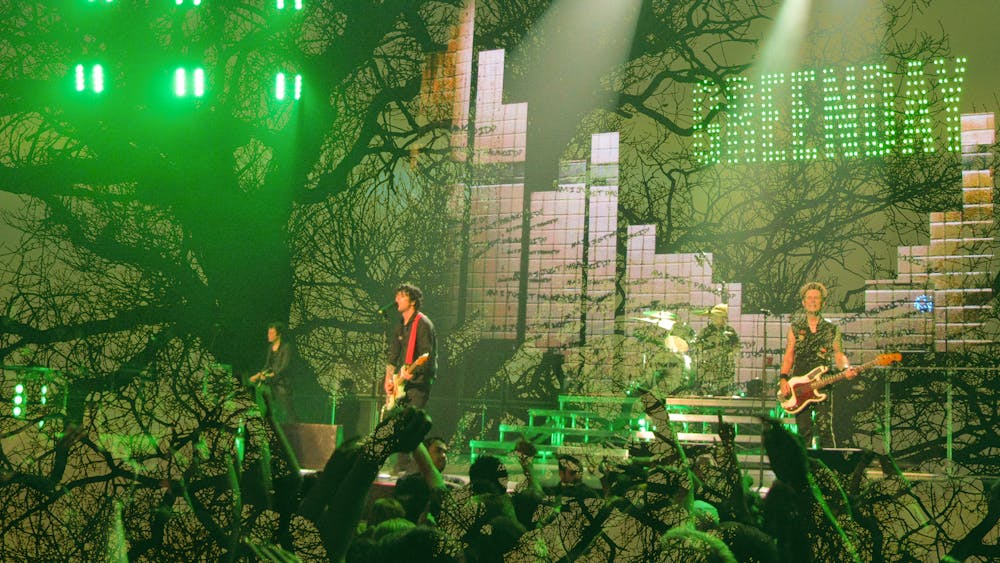If you were able to snag tickets to your favorite artist’s tour, chances are you flooded your feed with 30–second clips featuring your painfully off–key scream–singing. If you didn’t, you probably clench your fists in anger at the mere mention of the show you missed. Touring has captured the attention of music enthusiasts around the globe (literally) for decades, playing an integral role in album lifespan and artist visibility. However, given the ticking climate clock, environmental activists have criticized touring musicians for their carbon emissions and energy usage, opening a discussion on the potential of sustainable tours.
Where does this environmental damage come from? Some sources attribute 70% of tour–based carbon emissions to commuter routes. Others credit tour lights, stage designs, and personnel transporting materials. More indirect damage surrounds overconsumption in cities, including non–biodegradable wristbands and food waste in local restaurants.
Some artists, specifically Billie Eilish and Coldplay, transform these criticisms into active measures to reduce their eco–footprints. The former focuses on commuter routes and consumption, partnering with Google Maps to offer public transportation routes to venues and nearby plant–based restaurants. Her team also allows reusable water bottles with on–site refill stations, while also recycling food, camping, and toiletry waste. Coldplay, while also promoting local efforts, emphasizes sustainable tour production, powering their entire show with rechargeable show batteries, waste oil, and solar energy. They also employ “in–venue solar installations, kinetic dance floors, and power bikes,” supplying 17 kWh of power per show, and plant a tree for every concert–goer, totaling seven million trees so far.
Albeit different approaches, both initiatives are undoubtedly successful. Coldplay’s environmental triumphs are well documented; their tour website reveals statistics like a 59% reduction in emissions compared to their previous tour and 3,000 tons of carbon saved using sustainable fuel for minimal flights.
However, the conservation of energy comes at an expense; it limits the flashiness of the stage. But is the magic of a concert really marked by an intricately decorated platform? Coldplay’s performance of “A Sky Full of Stars” for their sustainability–based Music of the Spheres World Tour instantly fills you with this warm feeling of belonging amid the beyond–ecstatic crowd, despite the minimally designed stage. As a concert enthusiast myself, I can confidently assert that 90% of the experience at a concert is about screaming along to my favorite songs while the music vibrates throughout my body—not fixating on an extravagant stage that two–thirds of the audience can barely see.
Another concern is that these efforts are expensive and difficult to execute. The merit of this excuse, for course, depends on the size of the artist. Sure, smaller performers usually can’t afford additional sustainability costs, but criticism isn’t necessarily directed to them because their tours are typically in smaller venues. For artists who can sell out stadiums, however, this excuse is completely unreasonable. The Music of Spheres World Tour already grossed over $1.14 billion despite being the most sustainable tour to date. Even further, this mindset pushes a rich–get–richer narrative that places marginal millions into billionaire pockets while omitting them from social responsibility. Lastly, it’s just wrong to call small initiatives like allowing reusable bottles and providing public travel routes a hard–to–coordinate endeavor; this is genuinely the least musicians can do.
What are some examples, then, of sustainability negligence in tours? Infamously, Taylor Swift—particularly her famous 5,000–mile flight from Tokyo to Las Vegas for a football game, on top of the unnecessary flights she takes to and from concert cities—has emitted alarming amounts of carbon. Beyoncé’s Renaissance tour also had flight emissions, but what’s more pressing is her silence on the topic. Swift, at the very least, has recently purchased carbon credits to match emissions, but Beyoncé continues to remain silent. And frankly, now is the worst time for that.
Macroscopically, tours are small contributors to climate change, and green tours won’t magically prevent the Earth’s doom. However, global superstars serve as public influencers. Their efforts in promoting touring sustainability are long–term investments in the proliferation of pro–environment narratives amid a historically indifferent music industry. The fact that two of the biggest international icons (Swift and Beyoncé) have put in an underwhelming amount of effort in touring sustainably, knowing the precedents they set in industry standards, is both frustrating and neglectful.
This doesn’t mean to boycott the artists named above. Their tours are genuinely great for local economies, creating jobs, bolstering nearby businesses, and forging unforgettable experiences for devoted fans. The sooner mainstream fans demand environmental accountability from their favorites, though, the sooner we’ll see real change. The Earth is continuously baking in an oven set to overheat, and now, more than ever, we need our global superstars to lead the change.

